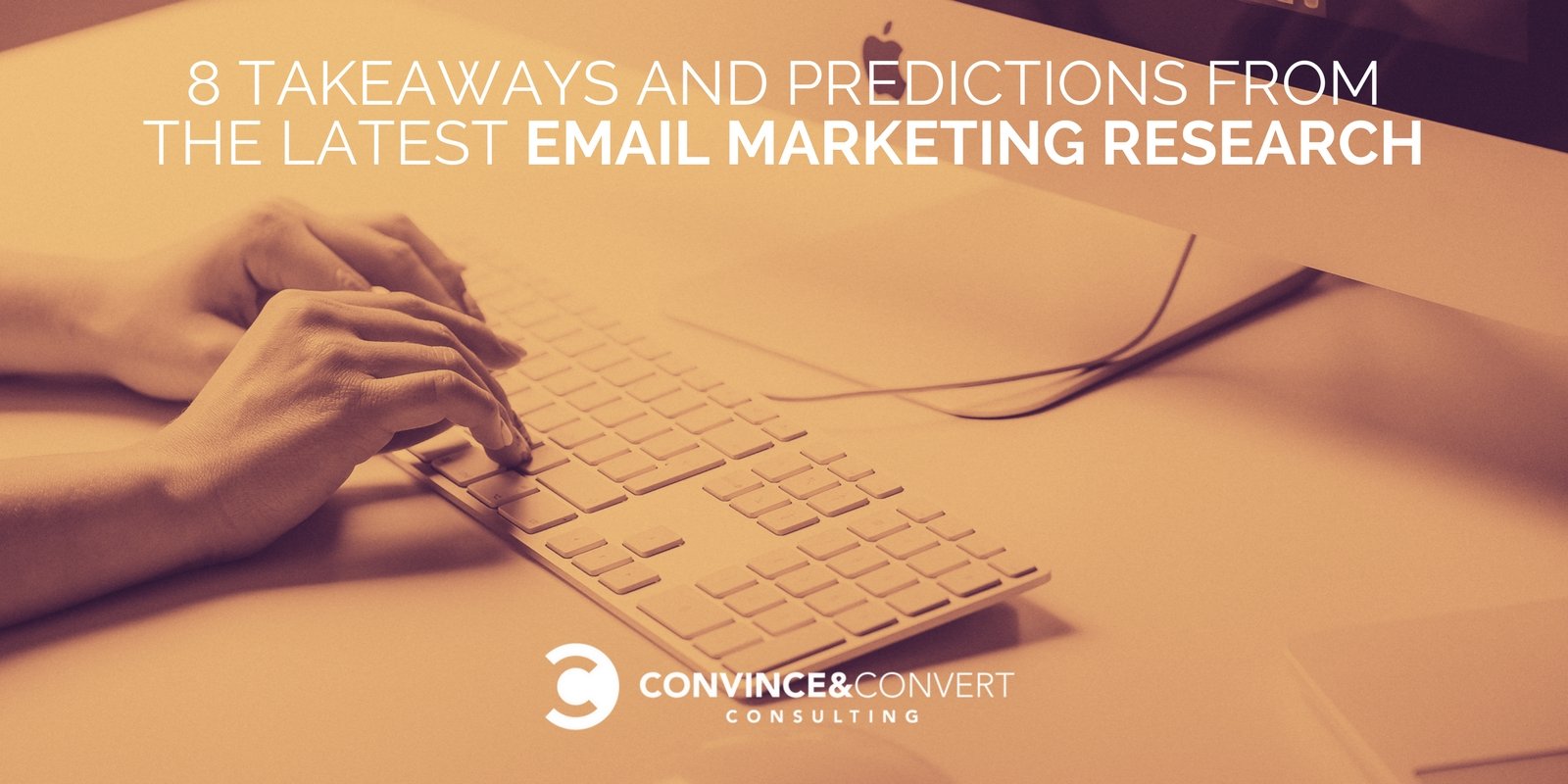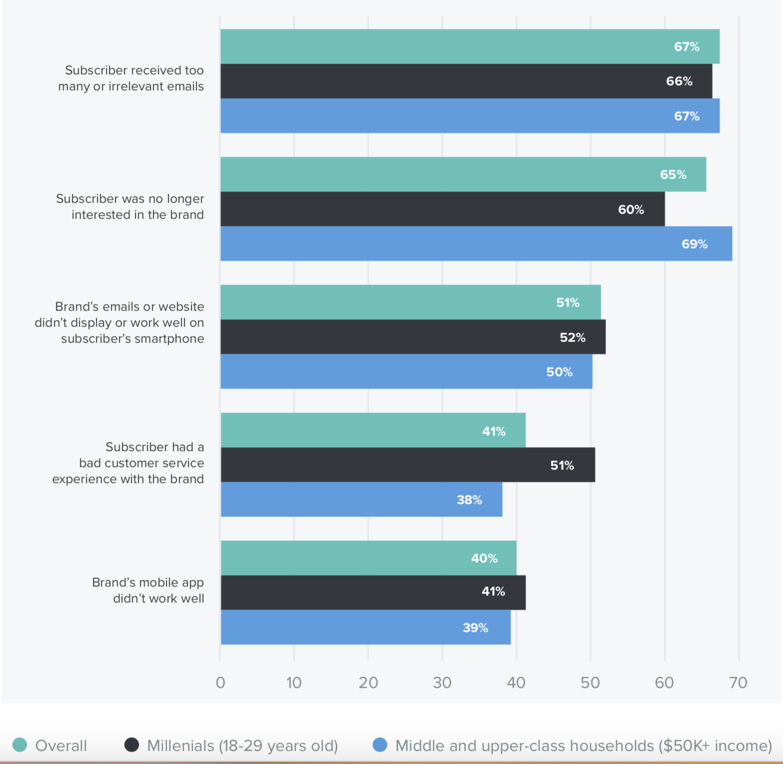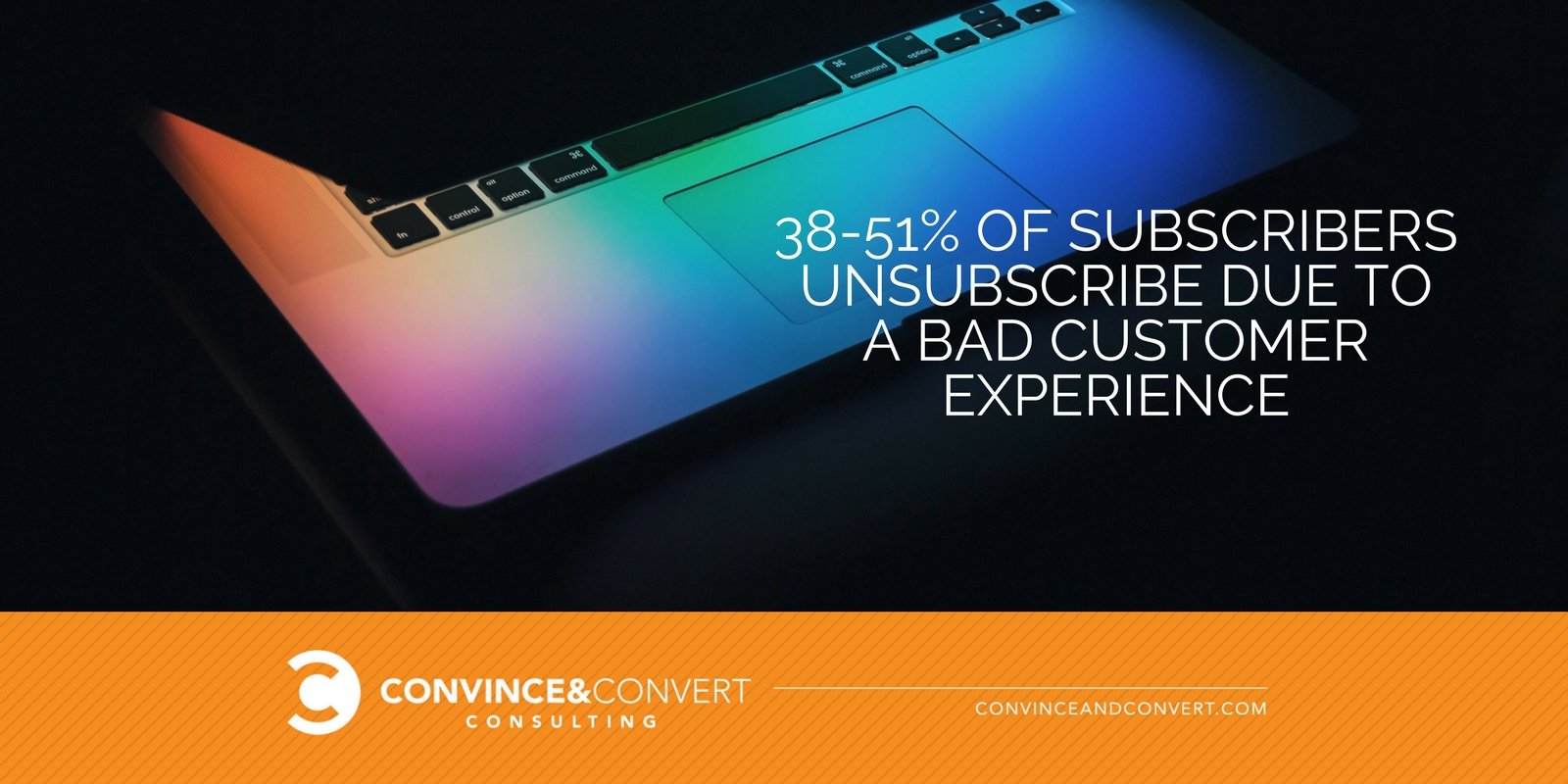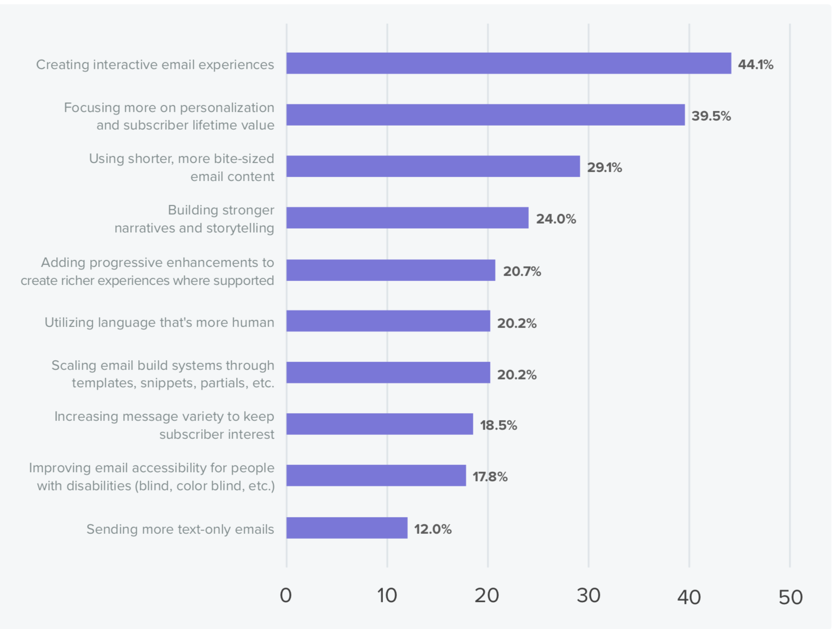
We have two recently released, well-authored research reports on email marketing that provide some very different—not contradictory, but different—assessments of email marketing as it stands today and where we’re headed. In this article, we’ll give you a concise look at each and the most relevant takeaways from each report, as they pertain to you and your business. Presumptuous of us? Nah. We know how marketers—and their extended teams—tend to think about such things.
You can access the full reports from the Litmus 2018 State of Email and the Campaign Monitor 2018 Email Predictions.
What makes this mash-up so interesting is that one is based on a great deal of quantifiable backward-looking data, and the other is based on predictions from a number of experts in the field. Does the analytical data support the forward-looking recommendations? Read on.
We’re big fans of Litmus and the services they provide, yet we’re not a shill for their services or offerings. They just provide really good and essential services to email marketers. So, it will not come as a surprise their report is chock full of solid insights, technological changes across the entire email client spectrum, marketing trends, and (understandably) a regular cadence of CTAs to learn more and engage with their brand. We’ve got four major takeaways for you on this report.
1. The 3 Audiences in Your Organization Who Need to See This Report
Those audiences are:
- Developers: The people who are hand-coding or tweaking in-platform templates with stuff like this: @media screen and (max-device-width: 320px) and (max-device-height: 568px) { /* Insert styles here */ } Scary! That is apparently important when viewing an email on an iPhone 8 in zoom mode.
- Marketing Managers, Strategists, CMOs: Anyone responsible for email results.
- Your In-House Council, Attorney, and CEO: Anyone who doesn’t want a massive fine or legal entanglement over your use of private data.
We did not include analysts in there because they’re usually too busy looking at their own collected data. The point is, this research report is broad enough that it spans multiple types of stakeholders who touch email marketing.
Action Item: Highlight the essential parts of this report and share them with your colleagues on a need-to-know basis, especially the developers. Your analyst could completely misinterpret your subject-line test results based on the unknown number of recipients who couldn’t view the email correctly on a particular email client on a particular mobile device. Yes, it is that granular.
And if it hasn’t hit the inbox of C-level execs yet, the GDPR rules and consequences are real. At the time of this writing, in fact, it’s all over the news. Be sure your organization has it all together on the new data and privacy rules (see Takeaway #4 below).
2. It’s About Subscriber Engagement, Not List Size
If anyone within eyesight of this is still being graded on list size, stop it. Stop it now. A massive surge in list growth is not a key metric if those subscribers are not engaging, interacting, replying, sharing, or purchasing. It’s a false metric—one that will absolutely skew your email marketing metrics.
Purge non-engagers, put them on a re-engagement campaign, implement ongoing automated list hygiene methods, and be aggressive in cutting the dead wood. If the boss doesn’t get it, forward this article, along with our contact info.
List size is a false metric—one that will absolutely skew your email marketing metrics. Click To Tweet
Top Reasons Consumers Unsubscribe
The following graphic shows the percentage of consumers (out of 1,212 respondents) who have unsubscribed from a brand’s promotional emails for the designated reasons.

Those first two reasons should come as no surprise. The third most common reason, “Brand’s emails or website don’t display or work well on subscriber’s smartphone,” is scary because that aspect of accessibility is largely under our control! (See Takeaway #3 below.)
Most interesting to us, however, is that fourth reason. 38 to 51 percent of subscribers unsubscribe due to a bad customer experience. If this is the case in your organization, it’s time to address and achieve best-in-class customer service, because that is also under our control.
Action Item: If you’re stuck in an environment in which list growth is a key metric, and your paycheck depends on it, you have three options:
- Leave.
- Teach the C-suite that list growth is significantly less important than engagement.
- Hope for regime change, and hope you aren’t part of that change. (If yes, see #1.)

3. Email Marketing Is Way More Technical Now
How up-to-speed is your email/web developer? What’s the latest device’s screen size? How about its retina pixel count? How do you optimize for that? Should one optimize for that?
Here’s a quick test. Can your email/web developer tell you about at least four Samsung (not Android) mobile device rendering quirks that absolutely affect readability? (Pause for effect.)
(Still pausing.)
Knowledge like this plays a crucial role in generating engagement. Responsibility for that knowledge comes down to the person(s) dropping bits and pieces of code into your emails prior to sending. To be clear, we’re not shills for Litmus. But we do encourage you to adopt a tool like theirs to ensure your brilliantly crafted, written, and designed emails can actually be experienced as intended, on a plethora of ever-changing operating systems and devices.
Action Item: Continual training. Continual validation testing. It has to be part of the SOP for every email prior to scheduling. Invest time and money in your email developers, and provide them ongoing training.
4. The Rules of Compliance Have Changed
Data security, privacy, and transparency have become flashpoints for consumers, businesses, and governments thanks to both high-profile breaches and strict new laws that affect marketers worldwide. This goes beyond GDPR to include changes related to Canada’s Anti-Spam Law (CASL), the FTC review of the 14-year-old CAN-SPAM laws, Net Neutrality, and salient examples of data breaches.
General Data Protection Regulation (GDPR) Highlights
- GDPR will affect every company that uses personal data from EU citizens. If you collect email addresses from and send email to subscribers in the EU, you must comply with GDPR no matter where you’re based.
- GDPR has stricter regulations around consent and the use of personal data. It also carries higher-than-ever penalties for businesses that don’t play by the rules. Non-compliance can lead to fines of up to €20 million or four percent of a brand’s total global revenue—whichever is higher.
- Marketers who want to send email to EU citizens must review their email processes. Two options are creating separate sign-up processes for EU and non-EU subscribers and changing all opt-in practices to comply with GDPR.
Action Item: If you haven’t done so already, it’s time for your own internal data, privacy policies, and practices audit. Make any policy updates, and take any corrective action right away. (There’s sure to be some.)
There is a lot more covered in the report. It’s pretty granular and becomes more role-specific, so this is a good one to share with your extended team, especially the developers and implementers of your email assets. The assertions and recommendations in the report are based on data collected across their entire community of customers and practitioners.
Looking Forward
Both the Litmus and CampaignMonitor reports contain forward-looking predictions based on a combination of survey data and expert opinions. We’ve reviewed them using our own highly polished, critical prism and summarized the four most important ones below.
Which of These Will Be Big Email Design Trends In 2018?

Top Email Design Trends to Embrace. Source: Litmus poll of 524 visitors to its blog between Nov. 15 and Dec. 4,2017
Our take on it: As you can see from the survey responses above, we can no longer just talk at our subscribers. Interactivity has become the number one area of focus because it fosters engagement. These kinds of features allow subscribers to interact with an email directly in their inbox—opening a dropdown menu, revealing hidden images or text, or adding an item promoted in the email to a cart and then clicking directly to the checkout page.
Google is already folding interactivity into its platforms. Gmail has announced they will add support for dynamic content and interactive email through Google’s AMP technology. Although the move will have its own limitations and challenges, it’s a very strong sign that interactive email is going mainstream.
Further, we have to talk with our subscribers, using personalized, relevant, concise, and humanized stories and conversations. If your existing email content inventory or content plans aren’t addressing this, it’s time to make some changes.
Expert Prediction 1: A New Type of Combined Email Marketing Automation Is Rising
Expect the lines between marketing automation, email marketing, and CRM to blur as email and automation companies continue to expand their features. A new midfield of marketing technology players will emerge. This is great for marketers. It lowers the barrier to get more advanced functionality and start implementing smarter marketing.
Our take on it: Agreed. However, adoption and implementation of these new capabilities will not come without some effort, pain, and expense. You’ll likely need to make a continual investment (or perhaps a complete change) in your technology stack, content assets, CRM data profiles, training, and analytics. Be realistic and intentional as to how your teams will navigate this changing landscape, and get senior management on board too.
Expert Prediction 2: Marketers Will Covet Predictive Marketing Metrics
Right now, marketers are campaign-oriented. We focus on measuring the success of campaigns above measuring the customer lifetime value (CLV). But not for long. Soon, we’ll vastly improve upon predictive marketing metrics, such as CLV calculation. Machine learning and AI will predict individual and group customer lifetime value (called “predictive CLV”). Goodbye, historical CLV! Hello, predictive CLV.
Our take on it: Yes, it’s time to take the long view. This will be particularly hard for short-sighted and even sales-oriented businesses that tend to live month-to-month, without regard to the long game. Commissioned salespeople are not likely to embrace the notion of a customer’s lifetime value when their monthly sales quota is the only KPI they are concerned with. Yet most CEOs understand the idea of increasing shareholder value, and adopting a CLV approach dovetails nicely with that and, possibly, their stock options. Historical, CLV hasn’t been easy for a majority of companies. Predictive CLV might not be either. But it’s worth investigating, and once the case can be made, capitalize on it. Machine learning and AI are the keys here.

Expert Prediction 3: The Race to One-to-One Personalization Is On
The ability to craft individualized experiences at scale has given email marketing huge leads when it comes to personalization. But so far, email personalization has been typically based on past events like user-created profiles and preferences, purchases, and life stage events. Consumer expectations are rapidly changing. They expect everything to work like Spotify’s Discover Weekly playlist or Netflix’s Recommendation pages.
Our take on it: Spot on. All those other forward-thinking, bleeding-edge companies have reset customer expectations in every industry. And there is no going back. Yesterday’s good-enough, relevant email is no longer good enough. Personalization models and strategies now have to take into account real-time content consumption, infer customer intent, and deliver the next, most relevant content, CTA, assistance, or advice before the prospect (or existing customer) even knows what they need next. Customer journey mapping to stage-specific content inventory, overlaid with behavioral profiling, has to come together to meet the ever-increasing expectations of the prospect/customer. Those who get this right (and faster than their competition) will benefit because they will set the bar.
Expert Prediction 4: Investment Will Shift from Low-Value Emails to High-Value Emails
Investing the vast majority of our time in the production of mass emails that account for roughly 95 percent of our email volume but generate less than half of our email revenue doesn’t make sense. Instead, we’ll begin investing more time in the automated emails that account for five percent of our volume but most of our revenue.
Our take on it: That’s a fact. We’re spending a disproportionate amount of time and effort on emails that yield low per-unit results. But we’ve done it for two decades because it was really easy and cheap. It’s the 80/20 rule, or some variant of it. By shifting resources (time, effort, creativity) to the most valued subscribers, at scale, we expect to see better per-unit results. Each organization’s email models will need to adapt this concept differently, of course. However, we all still want some greater level of engagement (and maybe revenue). Shifting our focus and resources to those who are predisposed to engage, or purchase, makes perfect sense.
So, What Next?
Email marketing is not static and certainly not dead. In fact, it’s a more vibrant channel than ever. New research says we’re all about to boost our marketing budgets. We recommend you boost your resource allocations—budgets, personnel, training, technology, analytics—in this channel, which is far less likely to be disrupted (e.g., by a Facebook algorithm change) and continually evolves to provide a better, more tailored customer experience for all.
At Convince & Convert Consulting, we combine the latest research data with our marketing expertise to help our clients take advantage of the emerging opportunities in digital marketing. If you have questions, thoughts, or counterpoints, let us know. We’d love to hear from you.